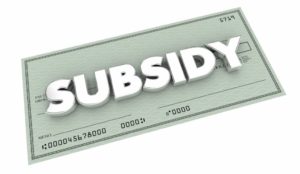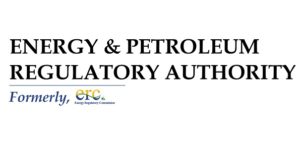The Energy and Petroleum Regulatory Authority (EPRA) has made the decision to cut down the sales margin of suppliers by as much as 7.31 Kenyan Shillings per litre in order to prevent the Diesel prices and Petrol prices from going any higher, while also preventing any outcry by general public regarding any monthly review which would have led to the fuel prices getting even more expensive and reaching an all time high.

The Energy and Petroleum Regulatory Authority (EPRA) stated that the prices for Diesel, Kerosene, and Petrol would stay the same in the course of the next month even though there has been an increase in Crude Oil as well as a corresponding increase in the cost of the importation of refined products.
A decision was reached to maintain the current prices and reduce the margin of the oil marketers which has been under the regulation of the Kenyan Government since 2010. The decision will mean that the Kenyan Government will compensate the dealers with an estimate of 2.8 billion Kenyan Shillings at the expense of taxpayers in the country.
The Oil marketers’ margin for the commodity; Super Petrol, has now been cut for the second time in a period of four (4) months from 12.39 per litre to 8.82 Kenyan Shillings per litre over the period until the 14th of August 2021. This represents a reduction of 3.57 Kenyan Shillings.
The development has made it possible for the price of Petrol to stay at 127.14 Kenyan Shillings per litre in Nairobi as opposed to the expected increase to 130.71 Kenyan Shillings per litre without the subsidy. The increase would have been the highest in the history of the East African nation of Kenya.
The margin for suppliers on Diesel was reduced by 7.31 Kenyan Shillings per litre to 5.05 Kenyan Shillings per litre. This will keep Diesel at its current price of 107.66 Kenyan Shillings per litre as opposed to the 114.97 Kenyan Shillings per litre that would have been the case if no subsidy was implemented.

The recent increases in prices already led to a public outcry in Kenya with the revised fuel prices at the time, leading to added pricing pressure throughout the nation’s economy and negatively affecting its cost of living.
The subsidy has so far been supported by billions of Kenyan Shillings that were raised from consumers of fuel via the Petroleum Development Levy which was increased to 5.40 Kenyan Shillings per litre in July of 2020 from 0.40 Kenyan Shillings per litre. This was an increase of 1,250 percent.
Although the fund is essentially intended to help protect consumers from the volatility that usually takes place in fuel prices observers believe that motorists are also losing out when the pay the levy of 5.40 Kenyan Shillings per litre at the pump.
Despite the absence of regulations to manage the subsidy plan, the Kenyan Government is making use of the Petroleum Development Levy to do so. It has so far been able to collect 15 billion Kenyan Shillings from motorists since July of 2020, till date.
In recent times a number of Kenyans have through social media, expressed their worries over fewer employment opportunities being available, the reduction in cash flow, and an increase in public debt which also led to them filing a petition to the International Monetary Fund (IMF) to prevent the East African nation of Kenya from receiving any more loans.
The cost of importing Diesel into Kenya increased to 53.96 Kenyan Shillings per litre in June of 2021 from the 50.64 Kenyan Shillings per litre which was the case in May of 2021.
For Petrol its cost of importation rose by 3.57 Kenyan Shillings to 57.16 Kenyan Shillings per litre becoming further proof of the impact of levies and taxes on the pump prices in Kenya.

This has moved the focus to the taxation that has been implemented on petroleum products. There are currently seven (7) levies and two (2) taxes that the Energy and Petroleum Regulatory Authority (EPRA) puts into consideration whenever it sets the prices for fuel. Said levies and taxes have been singled out as the cause of the high cost of petroleum products.
So far, the levies account for almost half of the total costs for Petrol right now.
The costs of transportation and energy carry pretty solid weight with regards to the measuring of goods and services that are used in determining inflation in Kenya.
The producers of services like manufactured goods and electricity are also expected to put into consideration the increased cost of petroleum products when deciding their prices.
The energy regulator; Energy and Petroleum Regulatory Authority (EPRA) has increased the foreign exchange as well as the fuel adjustment surcharges that it puts in the electricity bills for March that would be bound to affect the budgets of households all over Kenya.
How informative was this article? Are there any other news topics, categories, or How To topics, that you would like us to write on? Feel free to reach out to Mpesa Pay in the comment section.


